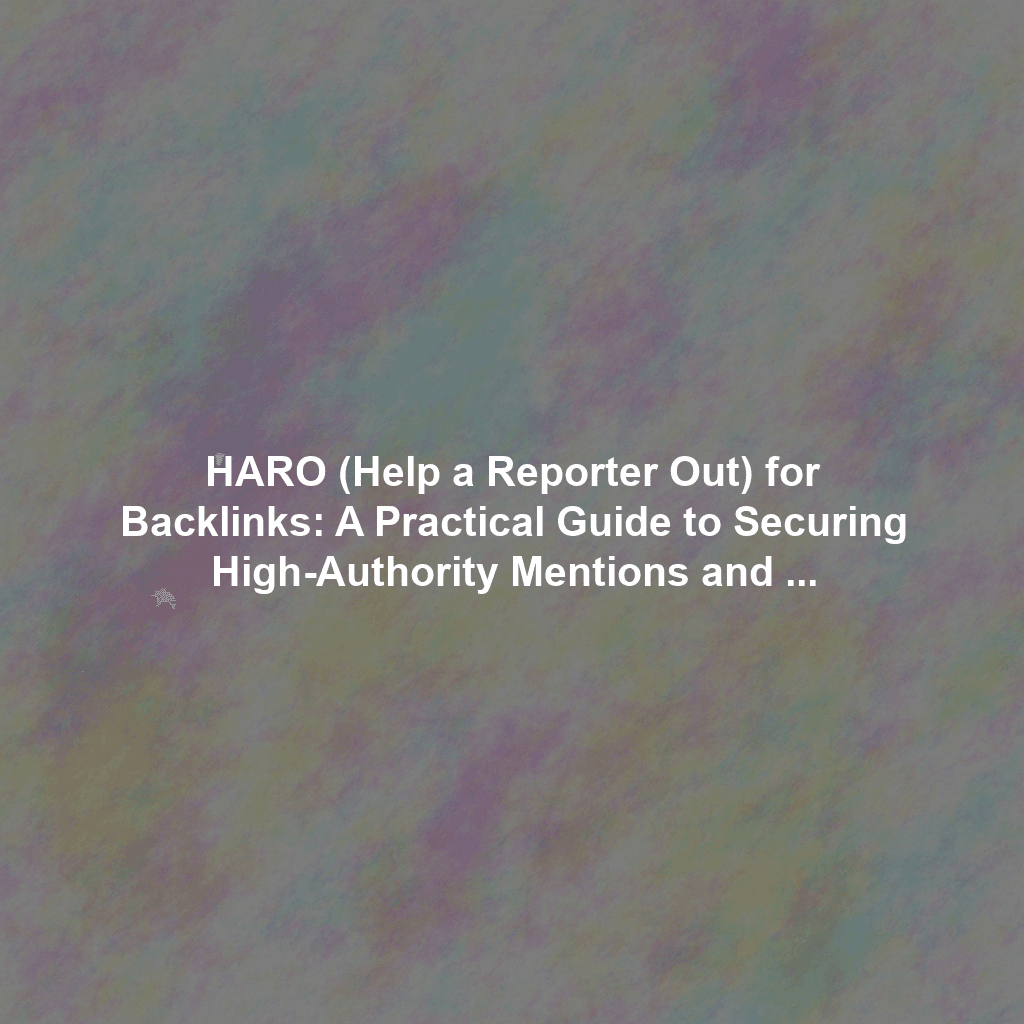This guide will walk you through the process of using HARO effectively, from setting up your profile to crafting compelling pitches that grab journalists’ attention. By the end, you’ll be equipped to leverage HARO to build your brand authority, drive targeted traffic, and secure valuable backlinks that boost your website’s search engine ranking.
Understanding HARO and Its Backlink Potential
HARO works on a simple principle: journalists submit queries seeking expert opinions and insights for their articles. These queries are then distributed to HARO subscribers, who can respond if they have relevant expertise. If a journalist uses your quote, you typically receive a mention and, ideally, a backlink to your website. This backlink, coming from a high-authority news outlet or industry publication, carries significant weight in the eyes of search engines.
Why HARO Backlinks Matter
- Authority and Trust: Links from reputable sources signal to search engines that your website is trustworthy and authoritative.
- Referral Traffic: Mentions in news articles can drive targeted traffic directly to your website.
- Brand Building: Exposure in prominent publications increases brand awareness and establishes you as an expert in the field.
- Improved Search Rankings: High-quality backlinks are a crucial factor in improving your website’s search engine rankings.
Step-by-Step Guide to Using HARO Effectively
Getting started with HARO is straightforward, but strategic implementation is key to maximizing your chances of securing valuable backlinks.
1. Setting Up Your HARO Profile for Success
Your HARO profile is your first impression on journalists. Make it count. Here’s how:
- Choose the Right Categories: Select categories that accurately reflect your expertise and the topics you can confidently speak about. Don’t spread yourself too thin; focus on your strengths.
- Craft a Compelling Bio: Your bio should highlight your experience, credentials, and what makes you a valuable source. Use keywords relevant to your niche. Focus on the benefits you offer to the journalist, not just a resume listing.
- Include a Professional Headshot: A professional headshot adds credibility and makes you appear more trustworthy.
2. Identifying Relevant Queries
HARO sends out daily emails with a list of queries from journalists. The key is to filter through the noise and identify those that align perfectly with your expertise.
- Use Keywords: Scan the subject lines and query descriptions for keywords related to your niche.
- Assess the Source’s Authority: Check the Domain Authority (DA) and Relevance of the publication. Prioritize high-DA sites within your industry. Tools like Moz, Ahrefs, and SEMrush can help with this.
- Read the Requirements Carefully: Pay close attention to the journalist’s specific requirements, including word count, deadlines, and preferred format.
3. Crafting a Winning Pitch
Your pitch is your opportunity to convince the journalist that you’re the best source for their article. Here’s how to make it stand out:
- Respond Quickly: Journalists often work on tight deadlines. Responding promptly increases your chances of being considered.
- Be Concise and Clear: Get straight to the point and provide a clear, concise answer to the journalist’s question.
- Offer Unique Insights: Don’t just regurgitate information that’s readily available online. Provide original insights and perspectives.
- Tailor Your Response: Personalize your pitch to the specific query and journalist. Show that you’ve taken the time to understand their needs.
- Include a Clear Call to Action: Make it easy for the journalist to contact you by including your contact information and a brief call to action, such as “Please let me know if you’d like to discuss this further.”
- Proofread Carefully: Typos and grammatical errors can damage your credibility. Always proofread your pitch before submitting it.
- Provide Value, Not Just Promotion: Focus on providing helpful information. Mention your website subtly, if at all, in the initial pitch. Wait for the journalist to request more information.
Example of a Good Pitch Snippet: “Regarding your query about the impact of AI on small businesses, I’ve seen firsthand how automation can significantly reduce operational costs. For example, one of my clients, [Client Name], saw a 30% reduction in administrative expenses after implementing AI-powered customer service tools. I can provide specific examples and data points to support this.”
4. Following Up and Nurturing Relationships
Even if you don’t get a response to your initial pitch, don’t give up. Consider following up with the journalist a few days later. A gentle reminder can sometimes make all the difference.
More importantly, if you are quoted, build a relationship with the journalist. Thank them for including you and offer to be a resource for future articles. Building these relationships can lead to more opportunities down the line.
5. Leveraging Your Earned Mentions
Once you’ve secured a mention and a backlink, promote the article on your website and social media channels. This will drive more traffic to the article and increase your visibility.
- Share on Social Media: Share the article on all your social media platforms.
- Feature on Your Website: Add a “Featured In” section to your website and showcase the publications you’ve been mentioned in.
- Include in Your Email Signature: Add a link to the article in your email signature.
Advanced HARO Strategies
To take your HARO game to the next level, consider these advanced strategies:
- Monitor Competitors: Track your competitors’ HARO mentions to identify opportunities you may have missed.
- Use HARO Alternatives: Explore other platforms that connect journalists with experts, such as SourceBottle and Qwoted.
- Track Your Results: Monitor your website’s traffic and rankings to measure the effectiveness of your HARO efforts.
Conclusion
HARO is a powerful tool for building high-quality backlinks, increasing brand awareness, and driving targeted traffic to your website. By following the tips and strategies outlined in this guide, you can effectively leverage HARO to achieve your SEO goals. Remember that success with HARO requires persistence, patience, and a commitment to providing valuable insights to journalists. So, start crafting compelling pitches, building relationships, and watching your website’s authority soar.


